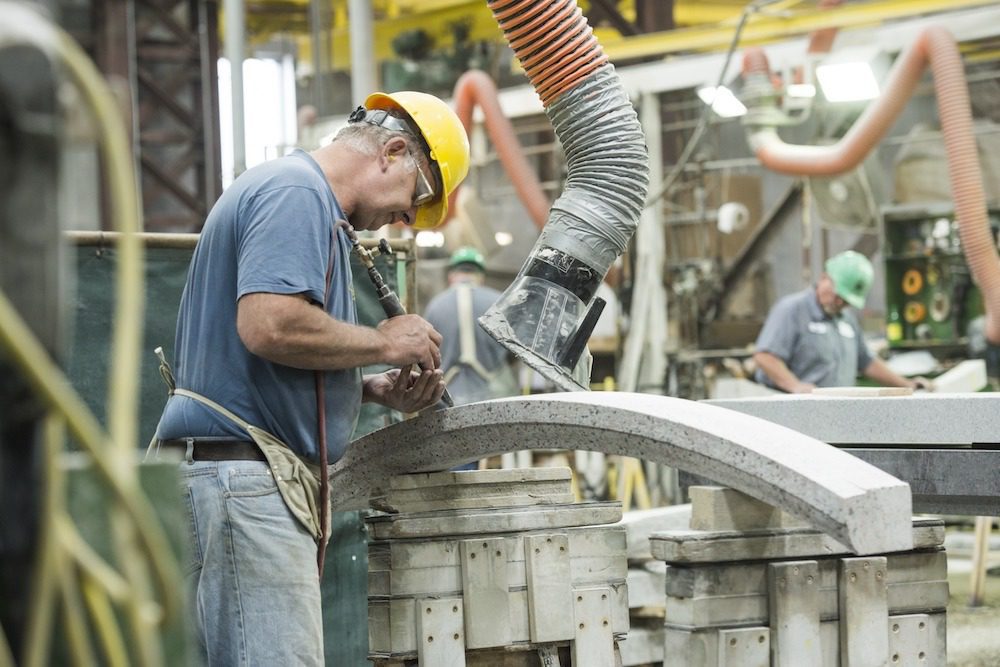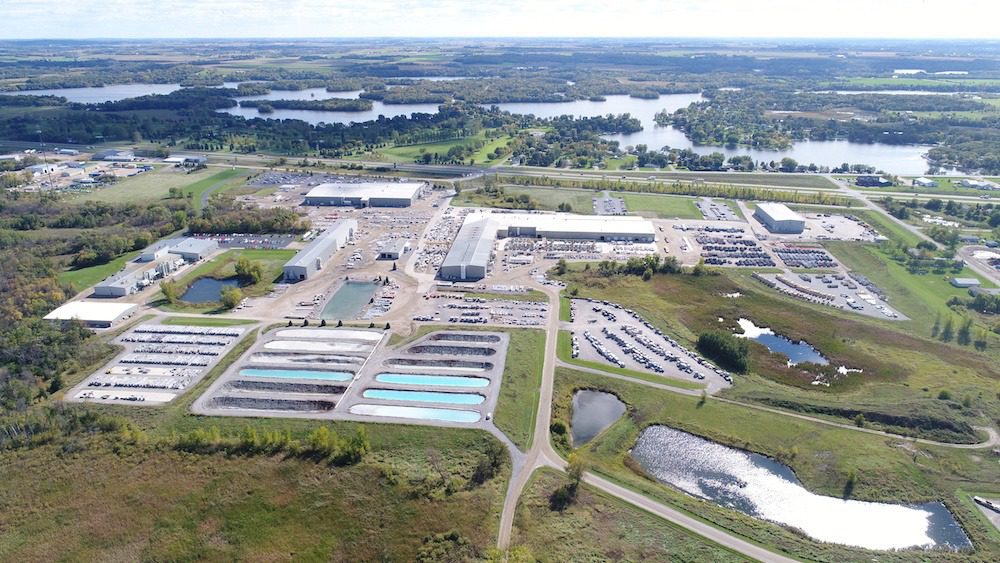 When the green building movement first came into the limelight decades ago, the focus for materials was primarily on recycled content and renewable resources. But today the sustainability of products has evolved based on changes in green building programs and also based on the quality of information and documentation now available. Project teams are now looking at the sustainability of the entire process of how a product gets to the market: how the raw materials are extracted, what chemicals are used in production and manufacturing, and ultimately how it’s brought to the market as well as end of life.
When the green building movement first came into the limelight decades ago, the focus for materials was primarily on recycled content and renewable resources. But today the sustainability of products has evolved based on changes in green building programs and also based on the quality of information and documentation now available. Project teams are now looking at the sustainability of the entire process of how a product gets to the market: how the raw materials are extracted, what chemicals are used in production and manufacturing, and ultimately how it’s brought to the market as well as end of life.
To learn more about the current picture of sustainable building and how natural stone fits in, we turned to green building icon Jason F. McLennan for his perspective. McLennan, an architect and founder of the International Living Future Institute, is considered one of the most influential figures in the architecture and green building movement today. In 2006, he created the Living Building Challenge (LBC), a building performance standard of the International Living Future Institute.
According to the Institute, the LBC is a philosophy, advocacy tool and certification program promoting the most advanced measurement of sustainability in the built environment. Different from other certification programs, the LBC encourages not just that buildings do less harm to the environment, but that they are designed to be regenerative and contribute positively to the environment.
Cari May: Thinking back to when you first introduced the Living Building Challenge 14 years ago, it was a pretty radical concept at the time – that a building can be self-restorative. What was it like in those early days when you first introduced the LBC?
Jason F. McLennan: We had all types of reactions – some from the naysayers who said the LBC was too hard. A lot of people felt like the industry couldn’t get there and that product manufacturers wouldn’t be willing to do what was needed. But we also had a lot of positive feedback from people who realized we needed to travel this path. People didn’t exactly know how we would get there, but they knew it was important and that it was the right thing to do.
C.M.: How do you define where we are right now in the evolution of sustainability?
J.F.M.: On the one hand, we’ve achieved an incredible amount and proved that you can build living buildings and have living products. The theory has moved into the reality moment and that’s fantastic. Overall, there’s been a general lifting, an elevating of sustainability in the industry. Still, the vast majority of buildings are not anywhere close to where we need them to be. Climate change is showing that we’re failing to meet the tasks at hand. But we’re making changes and continuing the path and need to raise our game even further.
C.M.: It often seems within building project teams, the push for a sustainable design comes from the designers. But everyone has a seat at the table of creating a sustainable built environment, everyone has a role in the process. What’s your take on the responsibilities of each role?
J.F.M: The early adopter community of the green building movement has been the designer community. That’s their nature — to imagine something that doesn’t exist. So, it’s not a surprise that they got on board early with this issue. But to your point, to be successful, it requires that everyone in the value chain is on board or you’ll run into hurdles and roadblocks.
We need engineers, manufacturers, contractors and installers – everyone in the supply chain on board. True sustainability requires a transformation of the entire supply chain. Not everyone sees the benefit, however. If it seems abstract and different and therefore challenging, you’ll meet resistance.
The more people realize that everything is connected, the more buy-in we’ll get. When everyone understands that their families’ health and well-being is all linked to the decisions they make, they will say, “I do need to pay attention and do my part no matter how small or large it may be to make a difference in my community, neighborhood and world.”


J.F.M.: Contractors need to understand that not everything is created equally. A brick is not just a piece of brick. A stone is not just a piece of stone. It matters how the stone is extracted. This is why I partnered with Coldspring on various projects, because of the company’s commitment to sustainably producing natural stone. A stone quarrier can have a little impact or a lot of impact when they extract. The finished product may look the same, but the ugly truth is what’s behind it.
It’s not just a company’s responsibility, it’s individuals, too. What are you supporting with your dollars? What are the values you’re upholding? Every time we buy something, we’re supporting a set of values – whether we realize it or not.
Each of us can think about how we do our job. Do we do our job to create lasting solutions? How do we clean up? How much waste is created, or not? Are we producing solutions that will stand the test of time? Or will they be torn out in the short-term and therefore create even more waste?
This idea of permanence is the thing that masons tend to understand better than any other trade. Masons have a long history and tradition of building things that stand the test of time. They share that lineage that they have an opportunity to say that their work matters. It’s work that’s going to last. And it needs to be the best version possible.


J.F.M.: It’s going to have to get shaken up even more. Right now, it seems there’s a little bit less interest in building certifications than there used to be. There’s a lot of interest in measured performance and people are realizing we aren’t going fast enough. There is also a lot of interest in carbon and climate change. So, I’m not sure entirely, but we’re going to definitely be seeing changes.
C.M.: Natural stone doesn’t appear to be an obvious choice in the minds of architects when thinking about sustainable building materials, but we know it should be. So, where’s the miss? Why do you think there’s a misperception?
J.F.M.: The misperception is by some, but not all. Sometimes it gets tangled up with cost issues. There are cheaper ways to do things than masonry. But those ways tend to be less durable and sustainable in the long-term. I think people often lump quarries and mines in the same bucket – but their processes are completely different. A stone quarry can run from fairly benign to moderately impactful, whereas mining for minerals is high impact.
The other part that I would say, is that there are often multiple parts of construction that need to be considered. Nowadays when you’re building a wall, it’s a concrete wall with metal ties and stone on the outside. It’s the assembly that’s getting the criticism, and stone – which is better from a sustainability perspective – is part of an assembly where the other products may not be. It does benefit the stone industry to work with the entire supply chain on how they’re producing their products.
C.M.: The stone industry is making a huge push to get more domestic and international quarries certified to its sustainability certification – ANSI/NSC 373, for the Sustainable Production of Natural Stone. What else needs to be done?
J.F.M.: The stone certification and other product certifications are being more sought after as specifiers are wanting to understand which company is the best company to specify from. Companies need to understand which stone quarries and fabrication facilities are certified to the industry standard. And the stone industry needs to make sure its standards are rigorous. The standards for sustainable stone need to get harder over time.


As more stone companies become certified, the responsibility lies in the hands of not just the architect or owner to promote sustainable products for the project. Everyone on the project team – contractors, installers and all other parties — are urged to pay attention and make sure the best products remain on the project. As Jason mentioned, stone is not just stone, just like no other product is just the product you hold in your hand. The story behind that product is the truth the market is looking to understand today. When we present the market with the option of third-party verified stone, it ensures that the stone meets the standards for sustainability and is an environmentally preferable material. And while product manufacturers can provide all the transparency documentation being sought after right now, it’s ultimately everyone’s responsibility to remain engaged and make good choices about the best products for the built world around us.
Article C/O Masonry Magazine